Call and Book Your Hotel Now!
Domestic Toll-Free for US and Canada: 1-800-997-1431
Worldwide: +1-817-983-0739
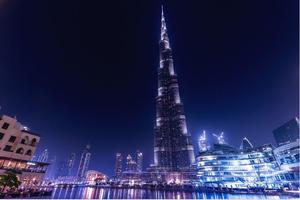
Dubai has transformed its skyline with startling architectural projects.
If you ever want to soar like an eagle, visit the Burj Khalifa, the world's tallest building. From the stunning Palm trilogy to the Dubai Frame, Museum of The Future and Miracle Garden, many landmarks in Dubai leave tourists astonished.
Beyond modern attractions, Dubai boasts many historical sites waiting to be discovered around the Bastakia district, along Dubai Creek, like Dubai Museum, Etihad Museum, Antique Museum, Grand Mosque, Heritage Village, and old houses and mosques.
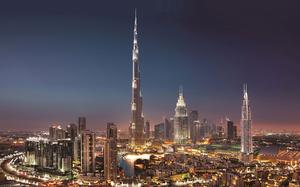
Downtown Dubai (or The Dubai Downtown), situated along Sheikh Zayed Road, is home to several key landmarks and sightseeing places, including the Burj Khalifa, The Dubai Mall, and The Dubai Fountain. The Dubai Downtown was created by Emaar Properties. The area has a population of about 13,200 and covers an area of 2 sq.km. (0.77 sq.mi.) at an estimated cost of US$20 billion. Downtown Dubai also offers many high-end hotels like Address Downtown, Vida Downtown, Al Manzil Downtown etc.
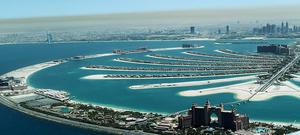
The results are astounding when innovation meets hard work, as seen in the man-made Palm Islands. An ambitious project visualised by Nakheel Properties, these reclaimed islands were constructed to accommodate the ever-growing tourist influx in Dubai. The Palm Tree Islands were built to increase the coastline for tourists. The Palm Islands consist of three artificial islands, Palm Jumeirah, Deira Island, and Palm Jebel Ali, on the coast of Dubai, United Arab Emirates. Shaped to resemble a palm tree, the Palm trio redefines luxury living.
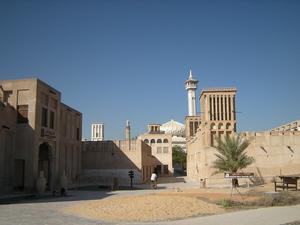
Today, Dubai is all about modern, high-rise constructions. Still, a part of it remains umbilically connected to its roots, with the narrow lanes and wind towers of the historic Al Bastakiya district. The oldest residential district in Dubai, dating back to 1890, is significant for its old-time architecture and affiliation with the busy lives of Bur Dubai. Al Bastakiya was primarily built by the affluent Persian Merchants drawn to Dubai by the Emirati government's rich trade opportunities and incentives.
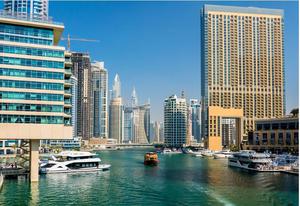
Dubai Marina is an affluent residential neighbourhood known for The Beach at JBR. Located in what is known as the 'new Dubai', Dubai Marina is a man-made canal city built to encourage luxurious lifestyles through exclusive waterfront constructions along the Persian Gulf shoreline. These include expensive hotels, aristocratic residential palaces and extravagant shopping and entertainment centres. Upscale yachts cruise through the large man-made marina, where activities range from jet skiing to skydiving.
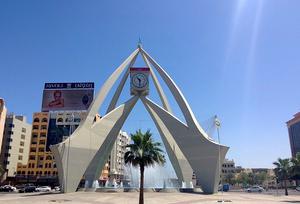
Deira Clocktower, initially called the Dubai Clock Tower, is a significant landmark in Dubai; Deira Clocktower has been a silent witness to the city’s changing face. It was built in 1963 to mark the country’s first oil exports. Also referred to as Dubai Clocktower, it stands at the gateway of Maktoum Bridge, one of the significant constructions in Dubai Creek, linking Bur Dubai and Deira.
In May 2023, it was announced the landmark is about to obtain a new look after the renovation that is going to be undertaken by the Dubai Municipality.
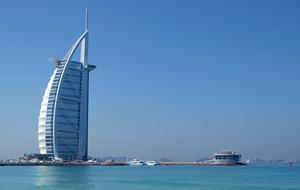
Everyone dreams of staying at the Burj Al Arab, the most extravagant hotel in the world. Burj Al Arab Jumeirah – which stands at 321 m, is 14 m taller than the Eiffel Tower and only 60 m shorter than the Empire State Building. Located 280 m off the shores of Dubai, Burj Al Arab was built on a man-made island. This sail-shaped hotel is the world’s first seven-star hotel developed by Jumeirah Hotels & Resorts, which chooses its customers and not vice versa. Burj Al Arab’s billowing sail enjoys being a focus of public attention with its glittery gold interiors, ultra-spacious suites, and the heightened level of luxury offered. It has broken an impressive number of records, like being the tallest all-suite hotel in the world; in 2008, Burj Al Arab also broke the Guinness World Record for the most expensive cocktail, valued at 27,321 AED.
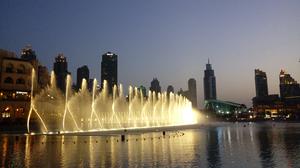
The Dubai Fountain is a choreographed musical fountain on the 12 hectare (30-acre) artificial Burj Khalifa Lake. Illuminated by 6,600 lights and 50 coloured projectors, it is 275 m (902 ft) long, and shoots water over 500 ft (152.4 m) into the air, accompanied by classical to contemporary Arabic and world music. It was built at AED 800 million (USD 218 million). The fountain was opened in 2009.
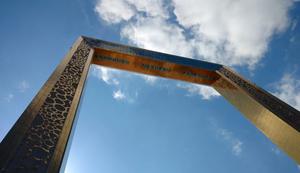
The Dubai Frame opened in January 2018 is an observatory, museum, and monument in Zabeel Park, Dubai. It holds the record for the most giant frame in the world. The building has a height of 150.24 m and a width of 95.53 m. A transparent glass bridge connects the two parallel towers to shape the picture frame. It features beautiful backdrops for visitors to take photos and selfies.
The Dubai Frame offers sweeping panoramic views of Deira's old town, the Arabian Gulf's sparkling waters, the Arabian desert's vast dunes and the Dubai Marina's high rises. The immersive gallery on the mezzanine floor features a 'Virtual Metropolis' made through projections, audio and visual presentations, and even curated scents and mists for an authentic retelling of the city's origins.
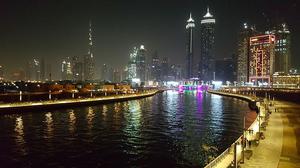
Dubai Canal is an artificial water canal inaugurated on 9 November 2016. It is a 3.2 km (2.0 mi) long canal from Business Bay into the Persian Gulf through Safa Park and Jumeirah. The width ranges from 80 m (260 ft) to 120 m (390 ft). It is 6 m (20 ft) feet deep and be crossed by 8 m (26 ft) high bridges. The canal side-walk has a shopping centre, hotels, restaurants, luxury housing, walkways and cycle paths. You can go for a stroll, a run or even cycle along the 6.4 km (4 miles) waterfront on either side of the canal, take a ferry or abra ride across the canal's calm waters.
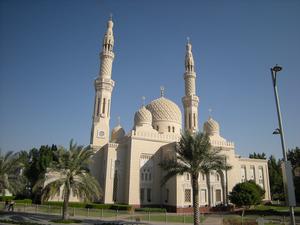
One of the most iconic Islamic landmarks in the Emirate is the Jumeirah Mosque—the mosque with unique 'Open Doors. Open Minds' policy welcomes visitors of all faiths to admire the surroundings and learn about Islam and the traditional Emirati culture. The style of architecture originated from Syria and Egypt and can accommodate approximately 1500 worshippers. Visitors can take guided tours and are encouraged to ask questions and take photos of the marvellous interior. You can even sample traditional snacks, including coffee, dates and other Arabic food.